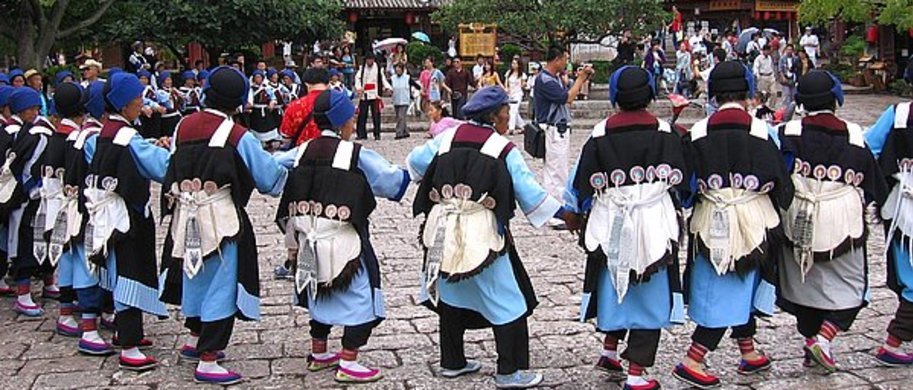
Dongba Culture Museum is a museum in Lijiang (northern Yunnan) which deals with the history of the Dongba culture of the Naxi people. Many other countries have built their own collections of Dongba scriptures, for instance, the US, the UK, France, Japan, Germany, Italy and Austria. In the US alone, the collection in the Library of Congress plus that in Harvard University Library numbers over 4000 volumes. For better protection, research and development of the Dongba Culture, in 1984 the Naxi Dongba Cultural Museum was built beside the Black Dragon Pool of Lijiang. The museum has more than 10000 Dongba cultural relics and various other historical relics and offers the "Dongba Culture Exhibition", thereby attracting more than 100000 visitors each year. Meanwhile, it also compiles and publishes Newsletter of Dongba Culture and has established the Lijiang Naxi Dongba Cultural School. For its outstanding work over the past years, county museums in China, awarded the honor of "Advanced Cultural Unit in China", and listed as one of the bases for patriotism education of the province.
The Naxi is a minority with a long history and a brilliant culture. With a population of 300,000, this group lives mainly in Yulong County in and around Lijiang. It has become known worldwide for having kept its own ancient and unique Dongba Culture and thus claimed to be a small ethnic group that has created a grand culture.
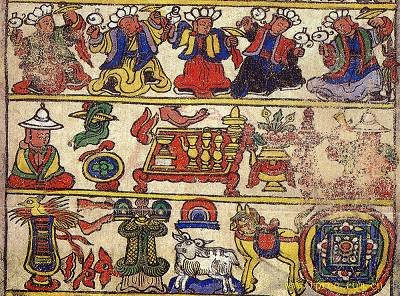
Religion
Believing in Dongba religion, the Naxi also accepted Lamaism, Buddhism, Taoism and Confucianism. Other people noticed the Naxi were not negative toward any other religions, for the Naxi people's religion activities were more like an external behavior rather than an internal belief. They even utilized the religious options available to them according to their needs. For example, Buddhism was quite helpful when the Naxi people had funerals and needed to pray for the relief of dead souls. Taoism catered to people's inclination to mystery and aesthetics. The Worship of ancestors was the necessary approach for communicating between the living and the dead. Polytheism was used by people to identify and differentiate the unseen mysteries and powers of nature. As well, it also provided people a method to deal with things unexplained.
Through belief in these religions, the Naxi developed a very deep-rooted and practical philosophy in their own religion. They believed that happiness is the ultimate pursuit of human life. Looking back, we may say that the Naxi people had in large measure reached their philosophical goal.
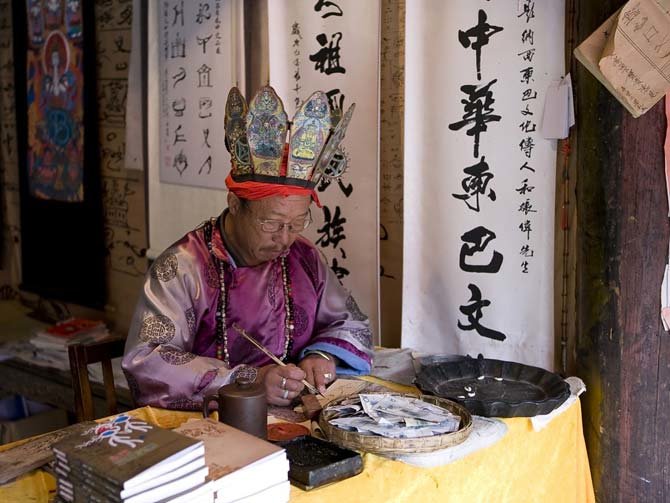
Dongba Culture
Dongba religion advocated respect for nature and ancestors. Despite the absence of uniform organization and temples, Dongba religion developed abundant written scriptures and codified ceremonies. These developments offered great benefit to the Naxi people. Their most magnificent religious book called The Dongba Scripture, recorded a multitude of beautiful lessons. Dongba religion and the Naxi hieroglyph first reached and standardized at Baisha, an ancient small town near Lijiang. Naxi people began to have their unified spiritual mainstay and influenced by the rituals and religious ceremonies relating to Dongba religion. The fascinating and mysterious Dongba culture therefore came into being. The Naxi people’s commitment to the preservation of natural resources originated from Dongba religious belief rewards as Lijiang became one of the most beautiful homelands of people.
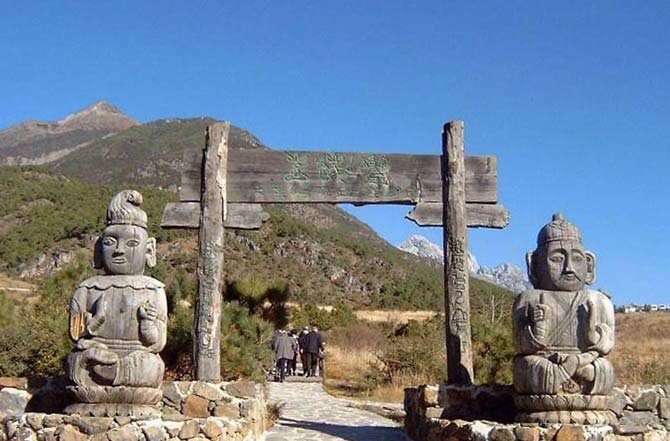
Dongba means sage. A Dongba in Dongba Religion was a scholar-priest who took charge of sanctified activities. Different from the clergies of other religions, a Dongba only worked part-time. As well, a Dongba had to be a male, and normally had responsibilities of performing many professions at once. A Dongba could be a sorcerer, doctor, artist, craftsman and more. They served their religion on many difference occasions, in ceremonies, chanting, dancing, or scriptural reading for followers. They served common people as the active citizens in their communities. Dongba were the advocates and successors of the Dongba Religion.

The Dongba Hieroglyph
Naxi people called the Dongba hieroglyph “Sijiulujiu”. It was eventually fixed as a type of written language in the 11th century. The Dongba Hieroglyph is the only living pictography in the world. The over 1500 pictographic characters, like an ancient glacier, survived to the present without melting away with time. Undoubtedly, it has been a cultural wonder of human history. The Dongba Hieroglyph and Dongba Scripture together are the two greatest contributions of Dongba Culture to the world. The Dongba Hieroglyph had begun by the time the Naxi settled in Lijiang. In the seventh century, some single pictographic patterns started to be commonly used among the Naxi people. By the tenth century the founder of Dongba Religion, Dingba Shiluo, standardized these patterns and made them an integrated written language system. There is an interesting fable about the Naxi pictographs. A long time ago the ancestors of the Naxi went to visit the deity to learn literature together with the ancestors of other ethnic groups. The Naxi’s ancestors carved what they learned on pieces of wood and stone while the others wrote theirs on leather. On the way back home they suffered starvation. Other ancestors could not stand it and boiled their leather for food. The Naxi’s ancestors endured and brought back all the wood and stone carving which later became the foundation of the Dongba Hieroglyph. This explains why the other regional nationalities don’t have their own written languages.
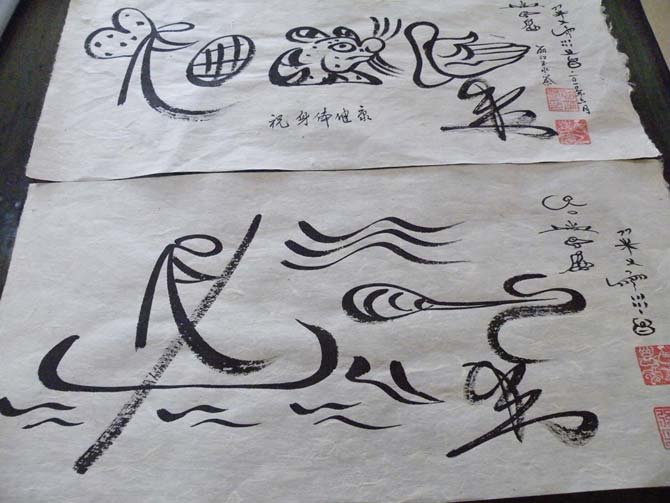
Dongba Dance
In Dongba scripture, there is a thing known as the Dongba Dance Map. This book recorded the details of more than 60 movements of dancing. Dongba Dance was normally performed in religious ceremonies. It came from the Naxi people’s nature daily life experiences. Many actions in these dances came from the imitation of animals in nature as well.

Wood-Block Painting
The Naxi ancestors had created more than thirty different sacred rituals to help people resolve all kind of spiritual problems in their lives. Wood-Block Painting was widely used for these occasions. The images of deities or ghosts were painted on wood blocks then erected at places of ritual practice. The Dongba priests believed that they could communicate with the deities through these images.
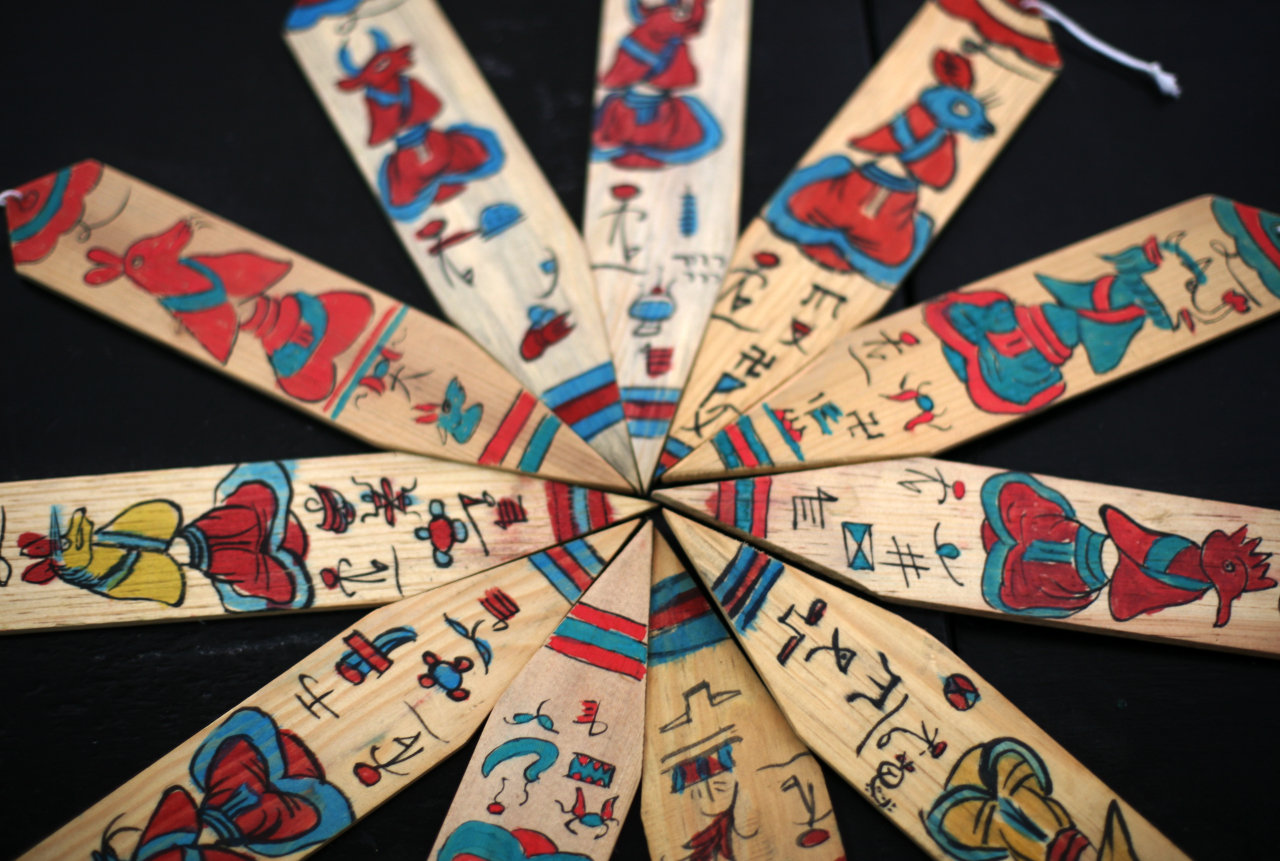
Deity-Way Map
The Deity-Way Map is called “Hengri” in Naxi language. It was considered an atlas for traveling souls. In the world was divided into Devil Territory, the Human World and Heaven. More than 400 images of the human characters, deities and devils in the spiritual world can be found in this Map.

Dongba Scripture
Dongba Scripture was written in Dongba Hieroglyph. There were many Dongba Scriptures. More than 20,000 surviving examples have been found so far. The contents of these writings covered a broad range of subjects relating to Naxi people’s lives. Thus it has become known as “The Encyclopedia of the Naxi”.
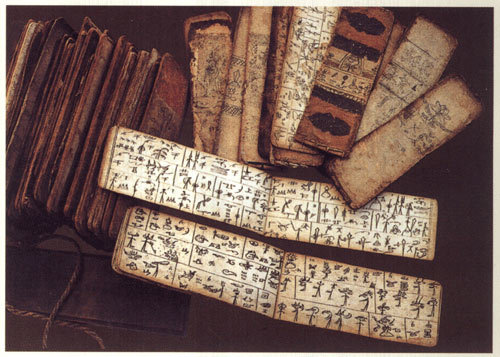
Five-Buddha Crown
The Five-Buddha crown was made up of pieces of paper with religious paintings on them. Dongbas wore it at all rituals.
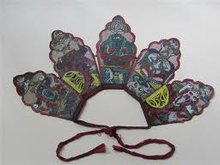 |
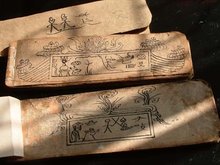 |
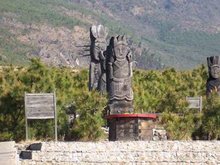 |
- 992 reads
